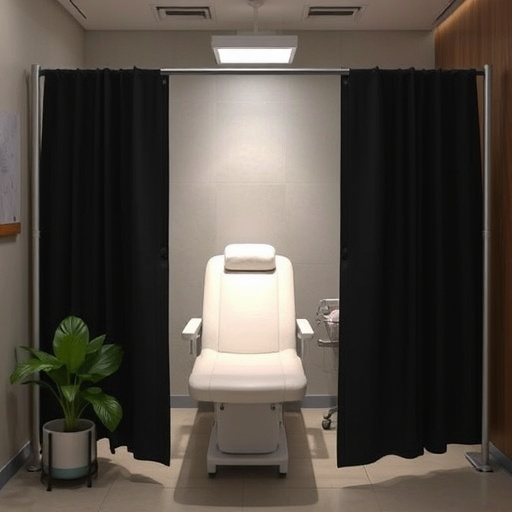Cold Air Intake (CAI) and Short Ram Intake (SRI) systems offer distinct performance benefits for vehicles, with CAI improving power in colder climates through external cold air intake and SRI providing quicker airflow using compressed exhaust air. The optimal choice depends on climate, vehicle specs, and desired performance gains. CAI installations are more complex due to reliance on external air sources, while SRI offers a simpler process with minimal external hardware. Both have unique challenges: CAI increases cost and time, and SRI requires advanced tuning knowledge for best results. When enhancing performance, consider driving style, budget, and preferences when deciding between dramatic power gains or easier installation.
In the realm of automotive performance upgrades, the debate between Cold Air Intake (CAI) and Short Ram Intake (SRI) systems rages on. This article navigates the intricate details of these two popular options, focusing on their installation complexity and performance advantages. By delving into the technical aspects and considering various factors, we’ll help you decide which system aligns best with your vehicle’s needs, ensuring a smooth and efficient upgrade process.
- Understanding Cold Air Intake and Short Ram Intake Systems
- Technical Comparison: Installation Process and Complexity
- Performance Benefits and Considerations: Which is Right for You?
Understanding Cold Air Intake and Short Ram Intake Systems

Cold Air Intake (CAI) and Short Ram Intake (SRI) systems are popular performance upgrades for vehicles, each with its unique design and advantages. CAI systems draw air from outside the vehicle, typically from the side or front, and route it directly into the engine. This cold, dense air is believed to provide better fuel combustion, resulting in increased power and torque. The external air source helps to avoid temperature-related restrictions within the engine bay, especially in colder climates.
On the other hand, SRI systems collect air from the engine’s exhaust side, after the turbocharger or supercharger has compressed it. This design is often more compact and allows for a quicker flow of air into the engine. While SRI may not provide the same level of temperature benefits as CAI, it can offer improved airflow, especially in vehicles equipped with forced induction. The choice between CAI and SRI depends on various factors, including climate, vehicle specifications, and desired performance gains.
Technical Comparison: Installation Process and Complexity

When comparing the installation processes and complexities between cold air intake (CAI) and short ram intake (SRI), several key differences emerge. CAI systems are designed to draw cool, fresh air from outside the vehicle, often requiring modifications to the engine bay for optimal placement. This extra step can increase complexity, especially for DIY installations, as it necessitates ensuring proper airflow and sealing to avoid leaks. In contrast, SRI systems route intake air from within the engine compartment, making installation relatively straightforward with minimal external hardware required.
CAI setups tend to be more intricate due to their reliance on external air sources. They may involve additional components like heat shields, air filters, and mounting hardware that add both cost and time to the installation process. SRI systems, while simpler in theory, can still present challenges depending on the vehicle’s design, as they need precise tuning to maintain proper air-fuel ratios. This often involves advanced knowledge of engine management systems and potentially requires calibration tools for optimal performance.
Performance Benefits and Considerations: Which is Right for You?

When considering performance enhancements for your vehicle, understanding the differences between cold air intake (CAI) and short ram intake (SRI) is key. Both systems aim to improve engine performance by enhancing airflow, but they do so in unique ways. CAI systems draw cold air from outside the vehicle, filtering it through an air filter before direct ingestion into the engine. This provides a denser charge of air, boosting power and torque. On the other hand, SRI systems use existing intake air from under the hood, routing it through a high-flow air filter before delivering it directly to the engine. While less dramatic than CAI in terms of temperature drop, SRI offers improved airflow and can provide a noticeable increase in horsepower.
Choosing between them depends on your priorities. If you seek significant power gains with cold air’s advantages, CAI is a great option. However, if you prefer a more subtle performance boost along with easier installation and maintenance, SRI might be the way to go. Both systems can enhance your vehicle’s performance, so consider your driving style, budget, and desired outcome before making a decision.
In the realm of automotive performance upgrades, Cold Air Intake (CAI) and Short Ram Intake (SRI) systems offer distinct advantages. Our comparison has highlighted the technical differences in their installation processes, with CAI often being simpler due to its direct connection to the engine bay. SRI, on the other hand, requires more intricate routing, but can provide enhanced performance gains. When considering which system is right for your vehicle, keep in mind that both have their merits and can significantly enhance engine output. Opting for the best fit depends on your specific needs, modification goals, and comfort level with installation complexity.














